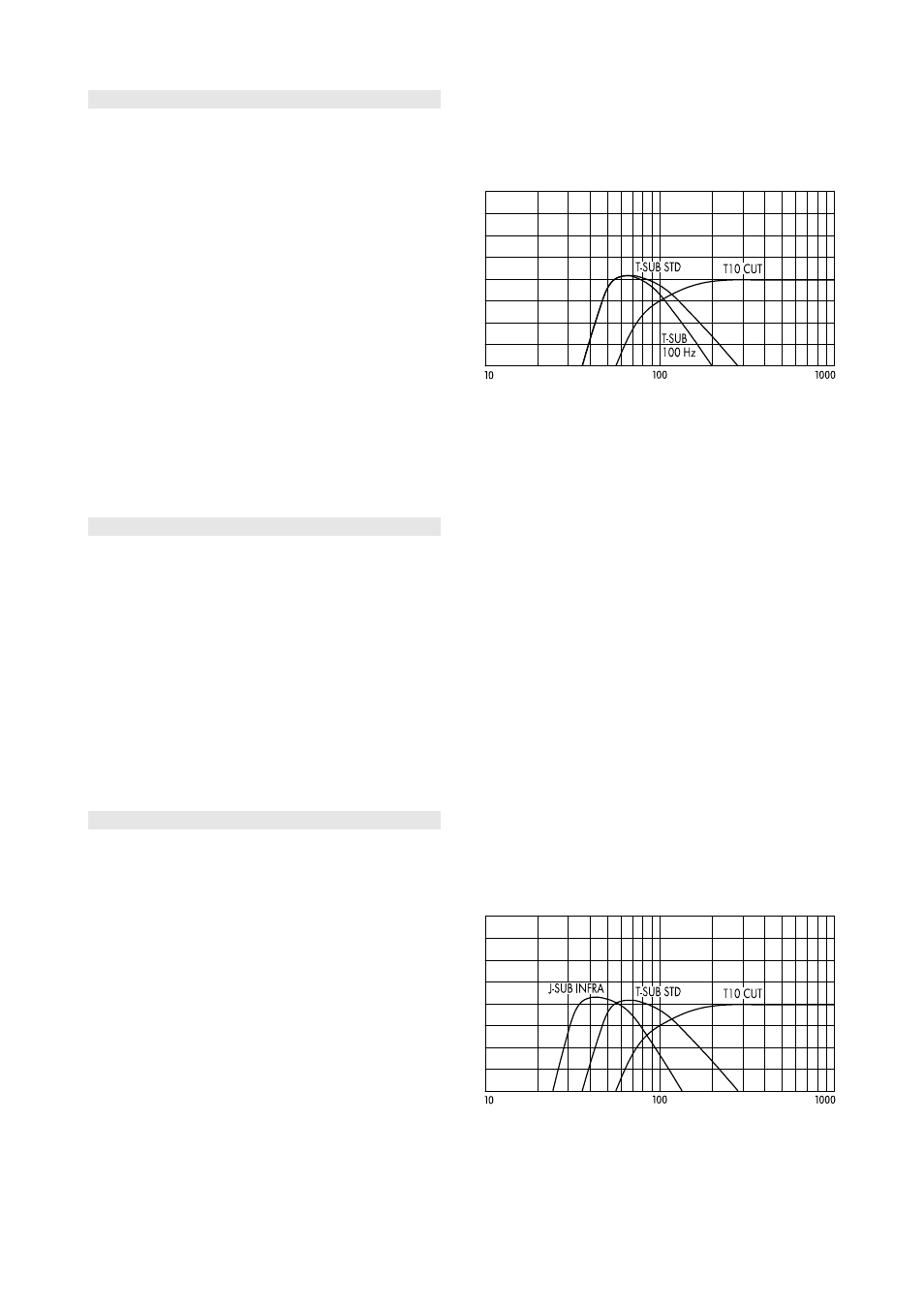The t-series line array, 1 number of cabinets required, 2 subwoofer setup – d&b TI 385 d&b Line array design User Manual
Page 12

6. The T-Series line array
The T10 is a very compact loudspeaker system which can
be used both as a line array and as a high directivity point
source speaker. For these applications the T10 cabinet
provides two different dispersion characteristics which can
be swapped over without any tools.
In line array mode the T10 provides a 105° constant
directivity coverage in the horizontal plane allowing for
vertical splay angles of up to 15° per cabinet. The system
can be used from very small configurations of three
cabinets per array up to a maximum of 20 cabinets per
array for larger venues. The T10 covers the frequency
range from 68 Hz to 18 kHz.
The T-SUB subwoofer extends the system bandwidth down
to 47 Hz either flown or ground stacked.
Smaller configurations of T10 cabinets can also be used
ground stacked supported by T-SUB cabinets or mounted
on a high stand. The most even energy distribution in the
audience area will however be achieved with a flown
array.
6.1 Number of cabinets required
The number of T10 cabinets to be used in an application
depends on the desired level, the distances and the
directivity requirements in the particular venue. Using the
d&b ArrayCalc calculator will prove whether the system is
able to fulfill the requirements.
Depending on the program material and the desired level
additional T-SUB subwoofer systems will be necessary to
extend the system bandwidth and headroom. The number
of T-SUBs needed per T10 cabinet for serious full-range
program will decrease with the size of the system. For small
setups a 1:3 ratio is recommended, for example one T-SUB
to three T10s.
6.2 Subwoofer setup
When used with subwoofers, the T10 systems should be
operated in CUT mode to gain maximum headroom at low
frequencies.
T-SUB (47 – 100/140 Hz)
T-SUB cabinets can be used to supplement the LF headroom
of the T10 loudspeakers in various combinations. They can
be used ground stacked or integrated into the flown array,
either on top of a T10 array or flown as a separate column.
Flown T-SUBs create a different level distribution in the
audience area than ground stacked ones. In particular the
area at the very front below the arrays has much less low
frequency energy when subwoofers are included in the
array.
This can be very useful in applications that do not require
high levels of low frequency energy at the front, however
for an event requiring a loud stage level additional ground
stacked subwoofers may be necessary.
For T10 arrays consisting of three or more cabinets we
recommend the use of the 100 Hz setting for the T-SUB
systems. Smaller T10 arrays providing less coupling at low
frequencies may benefit from the higher crossover
frequency of the standard mode of the T-SUB (140 Hz).
T10 / T-SUB crossover setup
B4-SUB (40 – 100/150 Hz)
Q-SUB (40 – 100/130 Hz)
E15X-SUB (37 – 100/140 Hz)
As an option T10 systems can also be used with B4-SUB,
Q-SUB or E15X-SUB subwoofers. These cabinets cannot be
integrated into a flown T-Series rig. However, they allow the
deployment of T10 cabinets on their M20 flanges using
either the T-Series Base Plate or the T-Series Cluster Bracket.
The T-Series Base Plate connects directly to the M20 flange
and supports an array of up to 6 x T10 cabinets while the
T-Series Cluster Bracket is pole mounted on the M20 flange
and supports up to three T10 cabinets.
To achieve the best acoustic results in critical venues, we
recommend to use the B4-SUB. It is a compact and effective
solution providing a cardioid dispersion from a single
amplifier channel.
Like the T-SUB these systems provide a 100 Hz circuit on
their controller which can be set accordingly.
J-SUB (32 – 70/100 Hz)
J-SUB cabinets in INFRA mode can be used to extend the
frequency range of a T-Series system. To gain maximum
headroom T-SUBs should be operated in standard mode
(i.e. 100 Hz not selected).
T10 / T-SUB / J-SUB crossover setup
TI 385 (6.0 EN) d&b Line array design, ArrayCalc V8.x
Page 12 of 54
